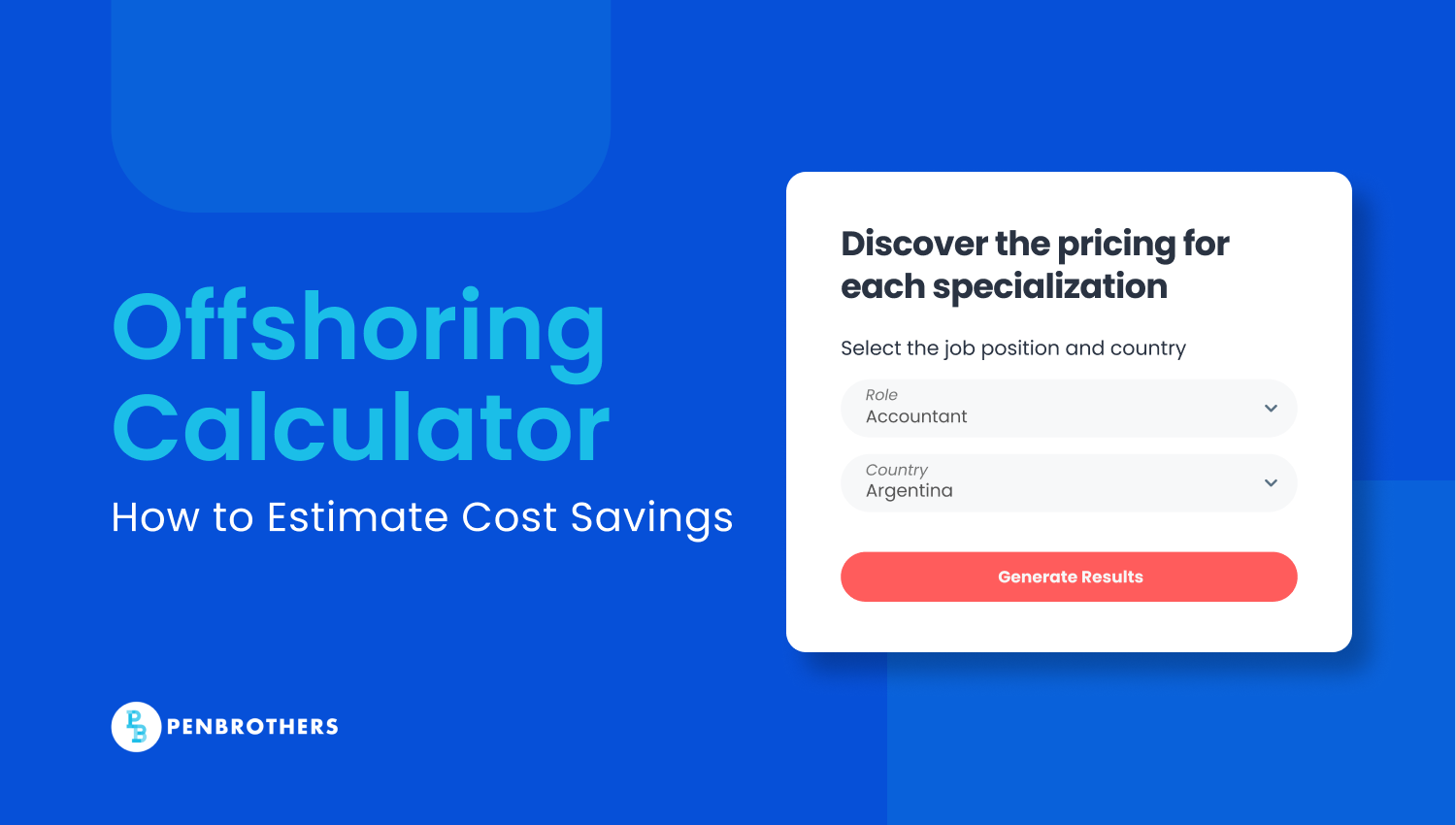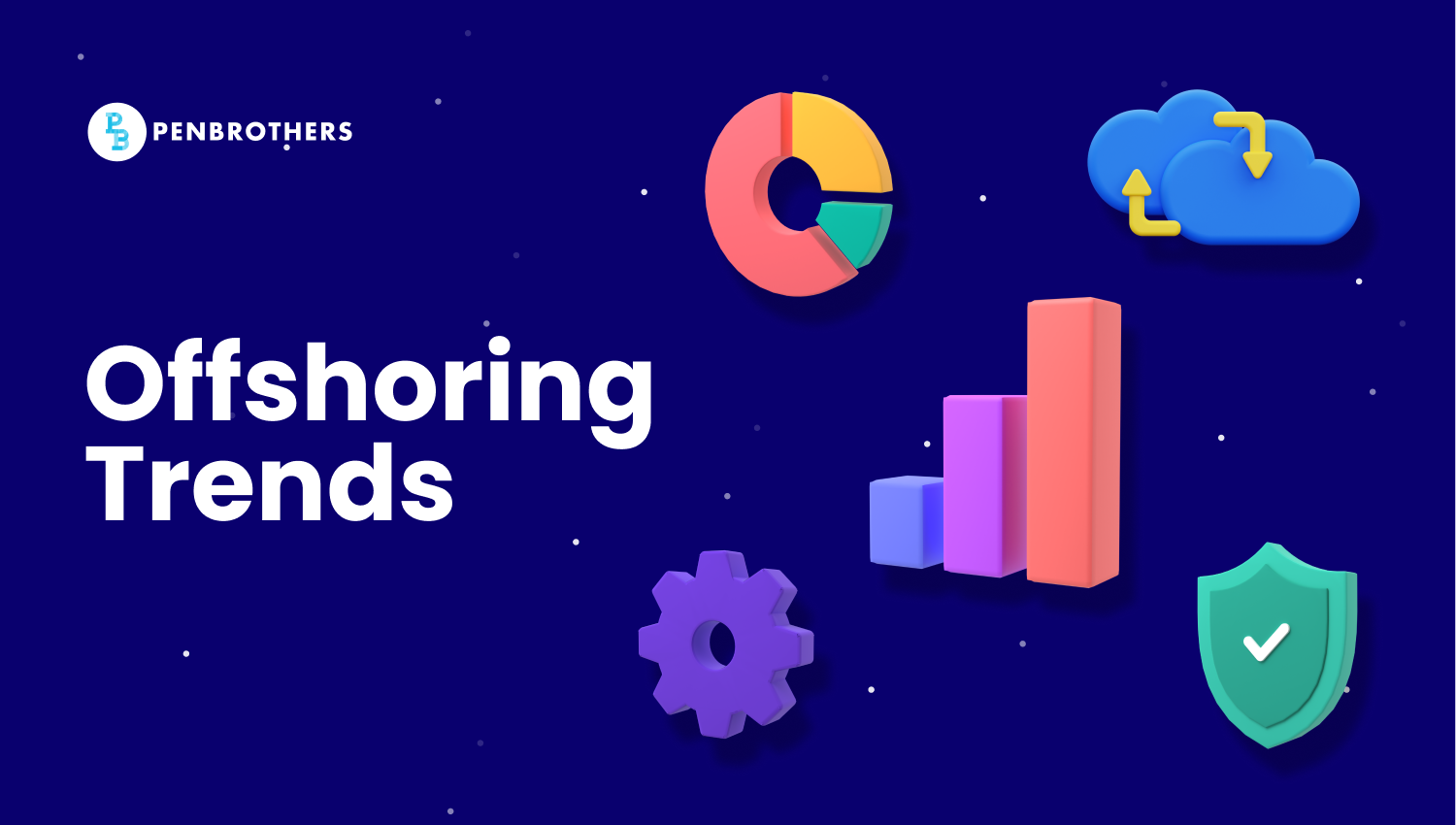What's Inside?
A Practical Guide to Finding Qualified Offshore Employees

One of the options to overcome the ever-growing global talent shortage that 75% of employers experience is offshore staffing solutions.
Offshore staffing is the process of moving an entire business process to a location outside of the country and hiring overseas or offshore employees to do the work there.
While hiring offshore employees is a great solution for talent shortage issues, that doesn’t mean that haphazardly implementing this strategy will instantly solve operational deficiencies in the company.
The rigor you apply to your recruitment process for employees from your main headquarters should be the same for your offshore employees. Otherwise, the cost savings you get from offshoring might not be enough of a return on your investment.
With that in mind, here are tips on improving your offshore employee recruitment process, so you can hire the most qualified and skilled employees for your team.
3 Things to Do Before You Hire Offshore Employees
While you might be in a hurry to fill roles in your company, there is a ton of prep work you have to do before you even start creating a job description.
Yes, it will take a bit of time and effort on your part, but the benefits of preparing beforehand will all be worth it.
Here are the three main tasks to complete before you hire offshore staff.
1. Categorize the Business Functions You Want to Offshore

One of the first things you need to do before you even initiate offshoring is to categorize your business functions based on their value to your customers.
The tasks and processes that matter the most differ from business to business. For example, customer service is one of the core business processes for the hospitality industry. It might not be the same thing for e-commerce.
Aside from what the customer values, you should also rank these functions based on how difficult it is to do.
By doing so, you create a barometer that shows you whether a function is something you can offshore. If a task is too valuable and too complicated to accomplish, it is better to do it in-house since it’s an essential business process that is too attached to your core competencies and is too easy to do wrong.
Your confidence and comfort level with offshoring other tasks will depend on your risk appetite. But simply taking the steps to organize your business functions can help you get better results from your offshore staff.
2. Document the Tasks You Want to Offshore
Before you hire offshore employees, document the business function that you plan to offshore.
You can’t offshore a business function effectively if you haven’t found a way to codify what you do to achieve the goals of said business process. Too many companies only think of creating a step-by-step guideline for business operations after they’ve offshored the process already. It’s better to keep them in-house at first until you’ve streamlined and ironed out the details of how you prefer to accomplish the process you want to offshore.
Documenting your business processes is a significant part of hiring and building your offshore team and setting them up for success. You can provide your offshore team with reference materials like use cases, best practices, instructions, and more to create uniformity in the job execution. It also makes it easier in the long run to figure out what part of the work you can control, manage, or tweak should you find the results unsatisfactory.
3. Set Accurate Success Metrics

Speaking of setting up your offshore team for success, before you start the recruitment process, it’s a good idea to identify accurate measures of success for a more optimized offshore team management approach. That will let you know whether your offshoring strategy will yield an appropriate return on your investment or if you need to make changes to it.
Again, it is difficult to set key performance indicators (KPIs) only after you’ve taken these processes offshore. The best way to create accurate KPIs is to see how you’d perform these tasks closely and set accurate measures of success based on that. That way, your offshore team won’t feel like you’re moving goalposts every time because you didn’t accurately set the goals right the first time.
Accurate measures of success can also make it easier to craft compelling job descriptions once you start recruiting. You can give that information to your offshore staffing agency partner should you hire one, so they can incorporate that into the candidate search vetting process.
See also: 5 Talent Acquisition Challenges and How to Overcome Them
5 Tips for Vetting More Qualified Offshore Employees
After doing the necessary foundation for a better recruitment process to hire qualified offshore workers, it’s time to start recruiting.
Here are some tips to raise your chance of hiring skilled offshore workers who are a good fit for your company.
1. Create Clear and Detailed Goals and Requirements
Having clear but brief details on what qualifications you’re looking for with your outsourced staff will make it easier to filter out candidates who don’t meet your requirements. These details will be useful should you hire offshore employees through local offshore staffing companies.
Make sure to double-check the wording, grammar, and clarity of your job description, too. Highly skilled candidates might not want to apply if they find it vague, confusing, or too long.
You should also create an internal list of requirements, specifically for determining cultural fit. A good understanding of your current company culture can determine whether a candidate can mesh well with your company culture or not.
For example, if you’re face-to-face with a headstrong, individualistic candidate who prefers working by themselves, but you have a collectivist company culture, then the misalignment can lead to dissatisfaction for both sides in the future.
Therefore, keep your company culture in mind when crafting your recruitment goals and requirements to reduce turnover rates.
2. Decide on Your Offshoring Location

Once you’ve finalized the job descriptions for the roles you’re hiring for, choose your preferred country for building an offshore remote team. A popular option for many companies is to offshore staff to the Philippines because of their English proficiency and their globally competitive skilled workers.
When choosing your preferred offshoring destination, consider the following factors:
- Accessibility of specializations
- Budget for labor costs
- Average salaries for the job role
- English proficiency and communication skills
- Time zone differences
- Labor laws and tax obligations in the offshoring location
- Reputation and track record of offshore support companies
Researching these elements can narrow down the countries that would be the best offshoring option for you.
Read more: Top 5 Reasons to Build Your Remote Team in the Philippines
3. Account for a Realistic Budget

Poor compensation is one of the top reasons for employee turnover. That’s why, despite cost savings being the most likely reason you choose to hire offshore employees, that doesn’t mean that you can’t be cost-efficient while ensuring that you’re providing your offshore employees with enough compensation for their work.
Doing research beforehand on average salaries for the job role you’re hiring for in their locality, employee benefits, taxes, and other fees can create a more accurate account of what your offshore workers’ compensation should be.
4. Streamline Your Recruitment and Vetting Process
The longer it takes to find an employee to fill a job role, the costlier it can get for your company. Thus, make sure that your time-to-hire is as short as possible without compromising on the quality of candidates that go through recruitment. That’s why streamlining your candidate pipeline is a constant process that you should do even as recruitment is ongoing.
A streamlined recruitment process is especially vital when hiring offshore remote workers. That’s because studies have shown that online job seekers are quite likely to abandon an online job application if the process is overly complicated.
Thus, you should always look out for complicated parts of the recruitment process that you can iron out as well as unnecessary trials that you can cut out entirely from the recruitment process.
5. Conduct Thorough Interviews and Trial Projects
Conducting structured interviews is a reliable way to validate the quality of a candidate.
Here are some parts to include in your hiring process to get in-depth information about your potential candidates:
- Assess technical competence through practical tests.
- Test problem-solving skills by presenting hypothetical problems to candidates.
- Review the CV or resume and portfolio, and mention standout parts in the interview.
- Include a current team member from the department you’re hiring for to join the interview.
- Be mindful of their communication skills in terms of tone, clarity, and promptness.
- Check past experiences to see if they have worked with a cross-cultural team.
- Create behavior-based hypotheticals to see how a candidate operates under different work settings.
- Gauge a candidate’s interest in your company’s values, mission, and vision to see if there’s a potential cultural fit.
By adding these scenarios and questions, you can discern the candidate’s communication abilities, cultural fit, as well as technical abilities.
As a backup plan, you can enact a trial period or project with a candidate to see how a potential candidate works. Should they fail to meet your requirements or display unwanted behavior, you can end your working relationship after the trial period.
Related article: Find the Best Talent: Hiring Remote Workers in the Philippines
Final Thoughts
The combined effort of prep work before starting recruitment along with the optimization of your candidate search can reduce the likelihood of hiring unqualified offshore employees.
That’s why if you’re planning to hire offshore employees, make sure that you go through these two phases to ensure that you build a high-performing offshore team that’s aligned with your onshore employees.






